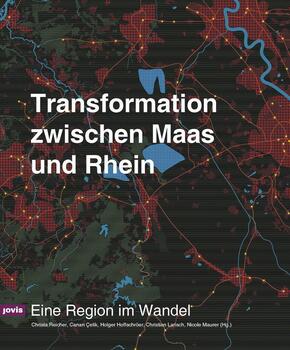Transformation zwischen Maas und Rhein - Eine Region im Wandel
| Verlag | Jovis |
| Auflage | 2025 |
| Seiten | 268 |
| Format | 24,5 x 2,5 x 29,5 cm |
| Gewicht | 1416 g |
| ISBN-10 | 3986120939 |
| ISBN-13 | 9783986120931 |
| Bestell-Nr | 98612093A |
Lässt man den Blick vom Rhein über die Tagebaulandschaften des Rheinischen Reviers und das Heuvelland bis zur Maas schweifen, zeigt sich eine vielfältige Region im Wandel. Dabei könnten die Ausgangslagen kaum unterschiedlicher sein - vom Wachstumsdruck entlang der Rheinschiene über den durch den Braunkohleausstieg angestoßenen Strukturwandel bis hin zur Neuinszenierung einer Grenzregion im Herzen Europas. Dabei ergeben sich nicht nur Fragen zur Zukunft der größten Landschaftsbaustelle Europas, sondern auch zur Wirkmacht der Landesgrenze und der Notwendigkeit einer grenzüberschreitenden Planung.
Das Buch zeichnet anhand zahlreicher Karten ein Bild des Status Quo und verknüpft diesen mit innovativen Ideen und Konzepten zur Gestaltung der Transformationsprozesse. Neben der Darstellung der unterschiedlichen Herausforderungen und Potenziale der Teilräume werden auch die zugrundeliegenden Prozesse illustriert. Die Ideen bewegen sich dabei vielfach auf dem immer wichtiger we rdenden regionalen Maßstab und wagen einen Blick in die noch ferne Zukunft, ohne dabei das Hier und Jetzt aus den Augen zu verlieren.
Umfangreiche Kartographie der Agglomeration Rhein Maas
Grundlagen und Beispiele für informelle Regionalentwicklung und grenzüberschreitende Planung
Innovative Strategien und Konzepte für die Stadt- und Regionalentwicklung
Looking from the open-cast mining landscapes of the Rhineland and the rolling hills of the Dutch Heuvelland to the River Meuse, you can see a diverse region in transition. But the starting points for these changes could hardly be more different-from the pressure to grow along the Rhine in North Rhine-Westphalia to the structural changes brought about by the phasing out of lignite and the redevelopment of a border region at the heart of Europe. Questions arise not only about the future of Europe's largest landscape construction site, but also about the power of the national border and the necessity for cross-border planning. The book uses numerous maps to provide an overview of the current situation and links this to innovative concepts and ideas for shaping the transformation processes. In addition to highlighting the different potentials and challenges of the different sub-areas, the book also illustrates the underlying processes. Operating at the increasingly important regio nal level, these ideas offer a glimpse into the distant future without losing sight of the here and now.
Provides a comprehensive cartographic overview of the Rhine-Meuse region Proposes fundamental guidelines and examples for informal regional development and cross-border planning Suggests innovative strategies and concepts for urban and regional development




















